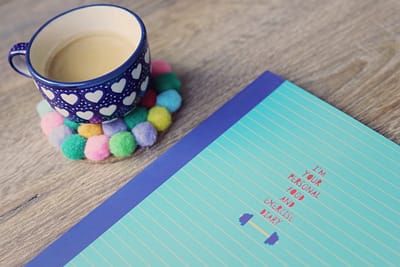If you want to be fit and healthy, you might want to make your own exercise plan. A personal trainer can help you, but it can be expensive and not very fun. Making your own exercise plan can help you choose the workouts you like and need. You can also set your own goals, such as losing weight, gaining muscle, or getting stronger.
In this article, we will show you how to make your exercise plan smart and easy. You will learn to use the best methods and tips to plan your workouts and get the desired results. You will also have more fun and enjoy your fitness journey. 
Step-By-Step Guide to Construct Your Own Exercise Plan
Here’s how you can achieve your aesthetic body by following the guidelines to make a top-notch and structured workout plan for yourself!
Step 1: Assess Your Fitness Level and Goals
You need to know where you are and where you want to go with your fitness. Start by checking your fitness level with some easy tests, like how much you weigh, how much fat you have, how fast your heart beats, how high your blood pressure is, how strong you are, how long you can exercise, and how flexible you are. You can use online tools to help you find out your fitness level.
You also need to have clear fitness goals. What do you want to do with your fitness? Do you want to lose weight, gain muscle, or do something else? You need to make your goals SMART. That means they are Specific, Measurable, Achievable, Relevant, and Time-bound.
This first step is important for making your own exercise plan. It helps you know what to do and how to do it.
Step 2: Choose the Types of Exercises You Enjoy and Need
There are different kinds of exercises that can help you with different things. Some of them are:
- Cardio: This is when you move your body fast and make your heart beat faster. It can help you burn calories, lose weight, and keep your heart healthy. Some examples of cardio are running, cycling, swimming, or dancing.
- Strength training can help you build muscle, gain strength, and boost your metabolism. Some examples of strength training are lifting weights, doing push-ups, or using resistance bands.
- Flexibility training is when you stretch your muscles and joints to make them more flexible and mobile. It can help you improve your posture, prevent injuries, and reduce stress. Some examples of flexibility training are yoga, pilates, or tai chi.
- Balance training: This helps when you practice keeping your body stable and steady. It can help you improve your coordination, agility, and core strength. Some examples of balance training are standing on one leg, walking on a beam, or using a stability ball.
- Functional training: Exercises that mimic the movements you do in your daily life. It can help you perform better, prevent falls, and increase your independence. Some examples of functional training are squatting, lunging, or climbing stairs.
You should pick the exercises that you enjoy, and that match your goals. For example, if you want to lose weight, you should do more cardio and strength training. If you’re going to build muscle, you should do more strength training and less cardio. You should do more flexibility and balance training to improve your mobility and posture.
Step 3: Determine the Frequency, Intensity, Time, and Volume of Your Workouts
In this pivotal step, you’ll fine-tune the specifics of your exercise plan by considering the Frequency, Intensity, Time, and Volume – often referred to as the FITT principle. These four factors are the keys to crafting effective and safe workouts tailored precisely to your fitness level and objectives.
When deciding on these parameters, remember to take into account your current fitness level, your desired goals, your daily schedule, and the importance of allowing your body ample time to recover. As a starting point, if you’re a newcomer to the fitness scene, aim for low to moderate-intensity workouts lasting around 20 to 30 minutes three times a week. On the other hand, if you’re more advanced, feel free to ramp up the intensity, duration, and frequency to suit your needs.
Step 4: Plan Your Workout Schedule and Routine
You need to plan when and what you will do for each workout. This will help you follow your fitness goals and have fun.
First, make a schedule that fits your life and time. Your fitness should not make your life harder but easier. Also, make a routine that has the details, like what exercises, how many sets and reps, how long to rest, what order to do them, and what tools to use for each workout.
Step 5: Track Your Progress and Adjust Your Plan as Needed
Make sure your schedule and routine match your goals based on the FITT principle (how often, how hard, how long, and how much you exercise). Also, change your workouts sometimes to avoid getting bored or stuck.
You need to check how well you are doing with your exercise plan and change it if needed. It’s about progress and change. To see how you are doing, write down your workouts, measure your results, and see how you perform. You can use tools like a journal, a spreadsheet, an app, or a device that you wear to help you.
Check often if you are meeting your goals, getting fitter, and having fun. Be ready to change your plan if needed. You can change how often, how hard, how long, or how much you exercise. You can also change what exercises or the order of exercises you do. You can try new things or challenges to keep it exciting. And don’t forget, sometimes taking a break or a rest day can be good for you too.
Final Thoughts
You have learned how to make your own exercise plan like a pro. You can use what you learned to make a plan that fits your goals and needs. Whether you want to lose weight, build muscle, or be healthier, you can make a plan that works for you. Remember, the key is to plan and do your workouts well. So, make your own workouts and see how your fitness goals become real. Your new healthy life starts now!



